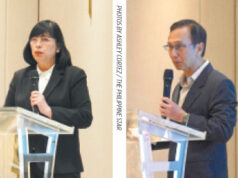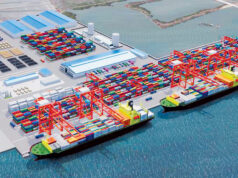The rise of sustainable buildings

Buildings provide spaces to live in, work, and shop, among other activities. But while we recognize them as an important part of our day-to-day lives and the economy, we should also realize the significant environmental impact of buildings.
In 2015, building operations and construction generated 13.1 gigatons or 38% of the global energy-related carbon dioxide emissions, according to the United Nations Environment Programme’s 2021 Global Status Report for Buildings and Construction. This dropped 10% to 11.7 gigatons in 2020, mainly due to the lesser energy demand during the COVID-19 pandemic, along with the decarbonization efforts for the power sector. Though the share of buildings and construction in the global energy-related CO2 emissions that year was at 37%.
Constructing green buildings, therefore, has the potential to reduce their impact on the environment. In the Philippines, green buildings have been garnering an increasing interest among developers.
Developers use green building certification rating systems to substantiate that their project met green building standards. Among the commonly held certifications in the country are LEED (Leadership in Energy and Environmental Design), WELL, EDGE (Excellence in Design for Greater Efficiencies), and BERDE (Building for Ecologically Responsive Design Excellence). And in the past years, the number of green-certified buildings has risen.
Real estate services firm Jones Lang LaSalle (JLL) Philippines’ data showed that, starting from 2016, the growth of green-certified buildings has a compound annual growth rate of 4.6% as of the third quarter of 2021. Of this figure, office buildings accounted for around 67.1%, while 11% were retail and 9.8% were residential.
EDGE, for its part, has seen this increase in green-certified buildings in the country, particularly during the pandemic.
Angelo Tan, country lead for the Philippines at the Climate Business Department of the International Finance Corp. (IFC), said that over 50 projects, spanning roughly 86,000 sq.m., have received EDGE certifications in the country so far. “What is interesting is that more than half of those projects were certified in 2022 alone. You’re seeing a lot of interest in recent years. In addition to that, we have 3.7 million sq.m. in the pipeline that are pursuing EDGE,” he shared at the BusinessWorld Virtual Economic Forum last May.
EDGE is a green building certification system by IFC, seeking to help developers and builders swiftly determine the most cost-effective strategies to construct resource-efficient buildings.
Mr. Tan said the Philippines has “a little over 200 plus” green buildings, noting also that most are office towers in Metro Manila.
But despite the rising interest in green buildings, he said that the development of green buildings in the country is still slow compared to its Southeast Asian neighbors.
“It’s been very slow. It’s largely focused on a very elite segment of the property sector. And I think that’s something that we need to change,” Mr. Tan said. “We need to make green and resilient infrastructure much more accessible to a greater proportion of the population.
Colliers also observed that office developments located in established central business districts are at the forefront of the green building sector. Yet, the real estate services and investment management firm noted that the rise of green buildings has extended not only within established CBDs in recent years, having also seen the growth in emerging provincial markets, especially in the residential, industrial, and institutional sectors.
According to an April 2020 article published by Colliers on its website, of those certified green buildings in the provincial market, 38% are industrial and 43% are office. Green strategies were also being planned and employed in residential development, particularly for the economic and upscale segments.
“There is an untapped green market in the provincial area, especially in the municipalities of Southern and Central Luzon, where demand for residential housing is stable,” the firm said. “Project owners and planners must work collaboratively to find ways of adopting green building strategies into residential developments and create an offering to the applicable market segment.”
Meanwhile, there is also a greater demand among occupiers for green buildings, according to JLL Philippines, which has urged developers to build more green buildings.
The firm said that this aligned with the broader real estate sustainability developments across the Asia Pacific, in which its survey recorded that 40% of corporate occupiers have already adopted net zero carbon emission targets, and another 40% are planning to adopt targets by 2025.
“While the Philippines has a long way to go in terms of our sustainability journey, there is greater consciousness and more conversations about it now,” Joey Radovan, JLL Philippines’ country head, said in a webinar last year. “The pandemic helped to increase the demand for green buildings, and this awareness must be augmented by government support through policies and incentives, as well as real estate firms adapting and promoting sustainability efforts among their clients.”
The green building sector offers an estimated $24.7 trillion investment opportunity in emerging market cities by 2030, according to IFC’s report in 2019. In the East Asia Pacific, there is an estimated $16 trillion investment potential in green buildings. — Chelsey Keith P. Ignacio



